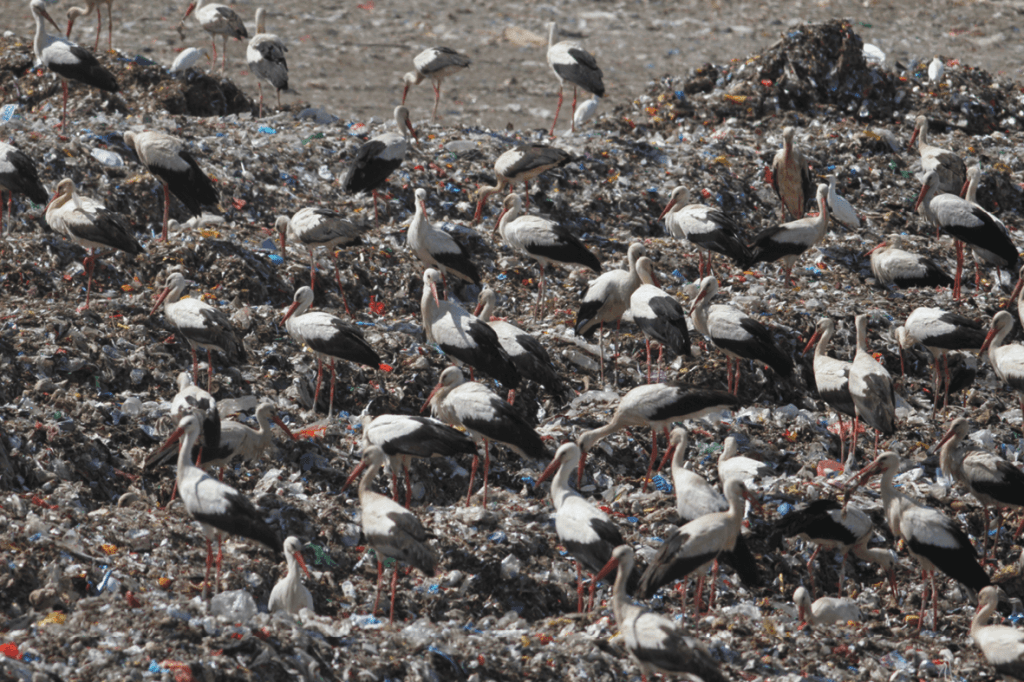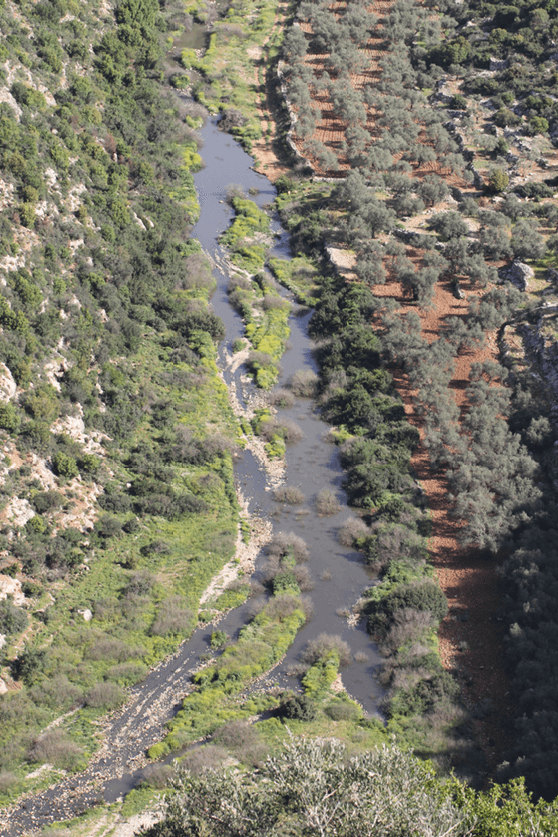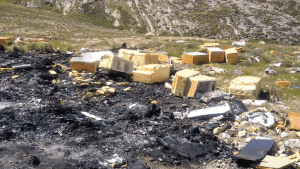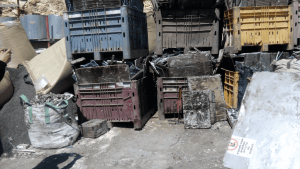An Essential Component of Healthy Living
Many of us make healthy choices every day to improve our well-being: some quit smoking, others climb the stairs, consume less sugar, or adopt a vegan lifestyle. All these are conscious decisions that directly affect our health. But what about the factors that are beyond our control, such as the quality of the air we breathe, the invisible contaminants in our water and food, or the impacts of climate change on our livelihood? A person’s well-being depends on various socio-economic factors combined with the quality of the surrounding environment. People generally underestimate how much the quality of our environment is linked directly to our well-being and healthy living. A study published last year by the United Nations Environmental Programme (UNEP) concluded that 15 percent of deaths in the Mediterranean region are caused by preventable environmental factors.*1

In Palestine, air pollution has a prominent place on the list of environmental problems that threaten our well-being. Harmful chemical substances are released into the air through emissions caused by vehicles, industrial fumes, dust from quarries, pesticides, and the random burning of waste and landfills. The emission of greenhouse gasses furthermore contributes to climate change. A study conducted in 2018 in the southwestern Hebron governorate (Halhul area) indicated that in areas where people were exposed to uncontrolled electronic-waste burning, human blood samples contained higher concentrations of carcinogenic lead coupled with lower hemoglobin levels.*2 In the Gaza Strip, air pollution is acute and attributed to a large number of old cars and motorcycles, the siege, and the Israeli ban placed on the import of fuel that could feed power stations, forcing Gazans to use home generators extensively. Thus, toxic carbon monoxide and sulfur dioxide are produced, causing harm to respiratory systems.

Climate change is mentioned on this list of environmental troubles as well. Although the Palestinian carbon footprint is negligible, climatologists consider our region a climate hotspot where the average worldwide temperature increase is coupled with a decrease in precipitation and with changes in its intensity and frequency. Therefore, the eastern Mediterranean region is exposed to greater impacts of climate change. Towards the end of this century, our summers are expected to be one to two months longer than now; winters will be equally shorter, the incidence of extreme weather events (e.g., heat waves, floods, cold spell, droughts) will increase, and precipitation will decrease by around 30 percent. Climatic changes are already affecting patterns of vector- and water-borne diseases typical for the Mediterranean basin, such as the West Nile virus, Leishmaniasis, and diarrheal diseases.*3 Diarrheal diseases are directly linked to freshwater supplies and strongly affected by rainfall patterns, currently killing worldwide around 500,000 children under the age of five every year.*4 Can you imagine what the situation will be by the end of the century? Is our health system ready to cope with such dramatic consequences?

There is furthermore a serious environmental problem regarding hazardous waste and its disposal in Palestine. About 47 percent of all waste is disposed of in unsanitary dumping sites, causing severe risks to public health, biodiversity, and ecosystems. The sources of hazardous chemicals include the food, pharmaceutical, printing, paint, and the leather and tanning industries, as well as olive oil mills, university laboratories, quarries, and vehicle maintenance stations. Pollutants include used tires and electronics, medical waste, pesticides, textiles, construction materials, as well as the byproducts of cosmetics, metal, and chemical manufacturing. Moreover, Palestinians are exposed to hazardous chemicals released by 300 factories located in the illegal Israeli settlements in the West Bank, and they are carrying the burden of waste smuggling from Israel: It is estimated that 200 to 500 tons of electronic waste are smuggled daily into Idhna village in the Hebron area alone.*5 All these hazardous chemicals end up in our air, soil, water, food, and eventually our bodies.

Antibiotics released through urban waste into the valleys and close to wastewater treatment plants cause microbes to develop resistance to common drugs, which is dangerous because, consequently, some diseases may lack effective treatment options in the future. Currently, around 35 million cubic meters of untreated wastewater are discharged*6 by the around 825 thousand settlers*7 living in (illegal) Israeli settlements in the West Bank and East Jerusalem – in contrast (and addition) to 34 million cubic meters of wastewater (some 9,5 m3 partially treated)*8 that is discharged by the 3.12 million Palestinians inhabiting the West Bank.*9 Most untreated wastewater from the Gaza Strip (around 37 million cubic meters in 2018) was released into the Mediterranean Sea, polluting the surrounding marine ecosystem and raising concerns of water-borne diseases.*10
Recent studies indicate an increased risk of COVID-19 infection for people who are exposed to higher levels of air pollutants.
Noise is another type of pollution that negatively affects our well-being, causing ischemia and heart disease. A study published in 2018 assessed the relation between noise levels, blood pressure, and pulse rates among students from 41 schools in the Gaza Strip. It showed that students aged between 13 and 17 years had higher blood pressure levels and pulse rates when exposed to noise than their counterparts who studied in quieter surroundings.*11

Photo credit: Dr. Akram Amro.


In the West Bank, 30,000 tons of agricultural fertilizers and 503 tons of pesticides are being used annually (123 types, 14 of them banned internationally for health reasons). In the Gaza Strip, 12,000 tons of chemical fertilizers and 893 tons of fertilizers are used annually (about 160 types, 19 of them banned internationally for health reasons).
Spending quality time in nature is essential for our mental health because natural and clean environments are sources of recreation and relaxation. Unsafe water, poor food quality, and polluted surroundings negatively affect mortality, morbidity, and economic productivity. Therefore, there is an urgent need to tackle environmental degradation and pollution, stop biodiversity loss and habitat fragmentation, and maintain a healthy and sustainable environment in Palestine. The public health sector must adopt an integrated environmental and health approach: green technologies, law enforcement, and improved water, waste, and chemical substances management must be integrated into policies and practices to reduce pollution.
Our Environment – This Week in Palestine
Publish Date: November 2021
